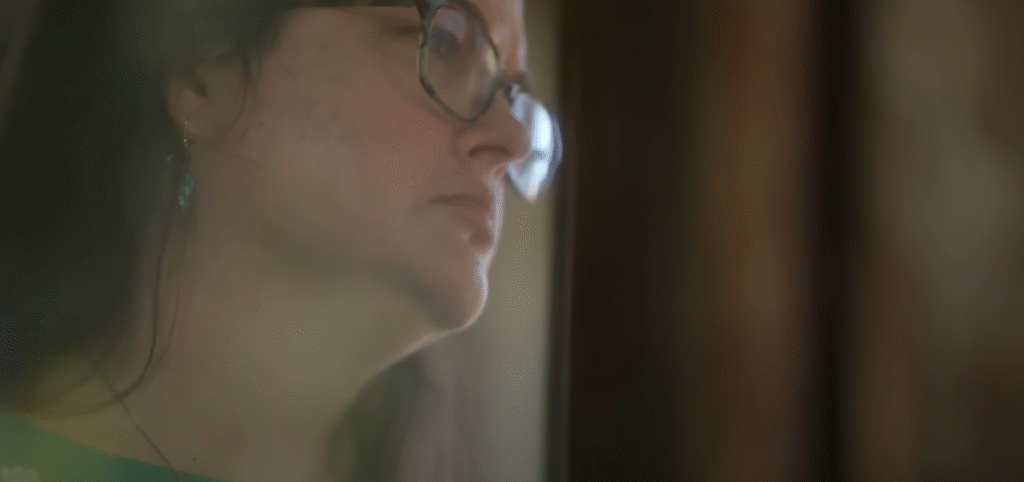Upon its Netflix debut, My Father the BTK Killer was more than just another addition to the growing true crime genre. It was a silent, profoundly human examination of what it’s like to live with the unforgiving reality that your father was a serial killer. It was a story about resiliency wrapped in tragedy. Through the eyes of Kerri Rawson, the documentary challenges the notion that evil is something remote, reminding us that darkness can lurk behind a normal smile, a steady hand, or even the voice of a Scout leader.
Growing up in Wichita, Kansas, Kerri Rawson lived in what seemed to be an almost perfect home. Dennis Rader, her father, took great care and was very active in their church. He attended her school functions, built her a treehouse, and gave her the keys to the family’s station wagon when she graduated from high school. Until she discovered years later that the same car had previously been used to transport the body of his last victim, Dolores Davis, the gesture appeared to be fatherly. Beyond just being horrifying, the revelation caused existential confusion.
Rader, who went by the nickname “Bind, Torture, Kill” (BTK), killed ten people in Kansas between 1974 and 1991. For more than thirty years, he was a perfect fit for suburban respectability. He presented himself as a church president and a well-behaved civil servant, but in private he was a compulsive predator who made fun of police officers in cryptic letters and poetry. It was only when his ego turned against him that his gory game of cat and mouse came to an end—a floppy disk that had been sent to a nearby TV station was discovered to have been connected to a computer at his church. After 31 years, the mask he had been wearing fell off in a matter of days.
Dennis Rader — Personal and Case Details
| Category | Details |
|---|---|
| Full Name | Dennis Lynn Rader |
| Alias | BTK Killer (Bind, Torture, Kill) |
| Born | March 9, 1945 |
| Birthplace | Pittsburg, Kansas, USA |
| Occupation | Former compliance officer, church president, Cub Scout leader |
| Crimes | Ten confirmed murders between 1974 and 1991 |
| Arrested | February 25, 2005 |
| Conviction | 10 counts of first-degree murder |
| Sentence | 10 consecutive life sentences (minimum 175 years) |
| Family | Married to Paula Dietz (1971–2005), two children including Kerri Rawson |
| Reference | https://www.biography.com/crime/btk-killer-dennis-rader |

In February 2005, Rawson, then a 26-year-old Michigan substitute teacher, found out about her father’s arrest. Her father was the BTK killer, the FBI revealed when they knocked on her door. She later recollected, “It felt like the air had left the room.” That evening, her family sat around a bucket of fried chicken in silence. According to her mother, even though her husband hadn’t passed away, it felt like he had. Worse, he was guilty and still alive.
This story is handled with remarkable empathy in the Skye Borgman-directed Netflix documentary. Known for her subtle narrative in Abducted in Plain Sight, Borgman creates a film that is incredibly clear in its purpose and emotionally accurate. She concentrates on the innocent consequences of dishonesty, such as the daughter who must endure her father’s terrible secret, rather than Rader’s transgressions. With her voice carrying the agonizing contradiction of loving someone who has destroyed lives, Rawson recounts her memories with steady honesty, trembling occasionally but never shattering.
With time, Kerri transformed her suffering into meaning. The personal fallout from learning of her father’s crimes was examined in her 2019 memoir, A Serial Killer’s Daughter, which gave readers an unexpectedly optimistic look at identity and forgiveness. The documentary goes beyond this goal. The well-known true crime format, which is typically centered on the murderer, is reframed in this way, with an emphasis on survival and finding one’s voice after years of silence.
The most striking contrast is that of Kerri’s courage and Rader’s banality. Rader fostered an apparently genuine affectionate bond with her as a child, teaching her to climb trees and fish, and encouraging independence. However, as she now realizes, those incidents were a part of an unsettling performance, a mask of normalcy that pretended to be normal. Kerri recalls moments of uneasiness, including his hot temper, his meticulousness, and the peculiar privacy regulations. According to her in the movie, “He treated me like a tomboy, but sometimes his anger felt like a switch flipping.” Her emotional reconstruction of the truth later used those memory shards as hints.
In a particularly disturbing detail, Kerri learned that her nightmares as a child, which showed her a “bad man” breaking into her house, might have been her subconscious trying to warn her. This type of latent memory is known to psychologists as “trauma leakage,” and it gives her story a terrifying undertone. Her young mind may have sensed something that even her conscious self was unable to understand, she wonders out loud.
The first time Rawson had seen her father in eighteen years was in 2023. El Dorado Correctional Facility was the venue for the meeting. The experience was both devastating and cathartic. Rader was still well-mannered, emotionless, and unnervingly articulate. He ducked when she inquired about the existence of other victims. He labeled his unsettling writings as “fantasies” when she confronted him about them, some of which mentioned bondage scenarios involving her name. “He dropped his mask and became BTK in front of me for the first time,” Kerri said.
Unresolved cases that may have been connected to Rader were reopened by investigators in Kansas and Oklahoma that same year. One of these was the disappearance of Cynthia Dawn Kinney, then 16 years old, in 1976. There was evidence that Rader might have been involved, including hints in drawings and old journals. Kerri, astonishingly, decided to help investigators. She stated that she felt “morally obligated” to assist other families in finding closure, which was an incredibly courageous and deeply redemptive choice.
Its choice to prioritize healing over horror is what makes My Father the BTK Killer so inventive. Neither does the movie focus on gory details or exalt the murderer. It emphasizes the potential for rebirth instead, the notion that facing trauma can, ironically, give one a sense of agency again. Kerri’s involvement with victim advocacy groups has given her a platform to speak out for people dealing with inherited trauma, demonstrating that survival is more than just perseverance—it’s transformation.
